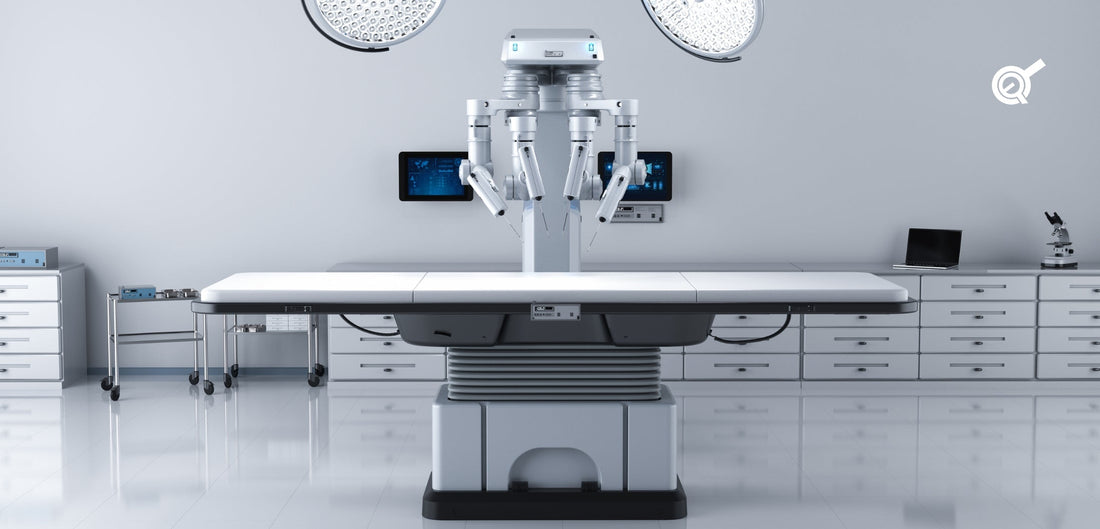In the ever-evolving healthcare landscape, the design of medical tables plays a crucial role in influencing patient outcomes. These tables serve as more than just instruments; they are the essential base for effective diagnosis, treatment, and recovery processes. As the emphasis on patient comfort and safety grows, the importance of ergonomic and practical design in medical tables becomes increasingly significant. This article explores the key features, advancements, and benefits of well-designed medical tables and their contribution to enhancing outcomes across the healthcare spectrum.

The Function of Medical Tables in Patient Care
Medical tables serve as essential tools, playing a crucial role in the daily routines of doctors, nurses, and medical professionals. The way they are designed significantly influences:
- Patient comfort during prolonged examinations or procedures.
- Safety, reducing the risk of falls, and enabling easy transfers.
- Accessibility to all patient groups, including those patients with disabilities.
Whether in a surgical suite or a primary care office, a well-designed medical table helps ensure better, more consistent care delivery.

PA-04 linear actuator
Key Features of a Perfect Medical Table
The best medical tables combine strength, versatility, and comfort, and possess these crucial characteristics:
- Flexibility and Personalization: Tables that can be tilted and interchangeable components ensure optimal positioning for patients, leading to enhanced diagnostic accuracy and treatment outcomes.
- Comfort and Ergonomics: Padded surfaces and pressure alleviation help minimize discomfort, especially for individuals who are unable to move.
- Maintaining Cleanliness and Preventing Infections: Utilizing antimicrobial materials, seamless furniture, and easily cleanable surfaces helps in reducing the risk of infections acquired in healthcare settings.
The strength and steadiness of a table are paramount; those made from premium materials promise long-lasting functionality. Even with heavy usage, they provide both security and dependability.
Advances in Medical Table Design
The introduction of health technology has led to remarkable transformations in modern medical tables.
- The integration of smart technology enables automatic modifications, remote operation capabilities, and customizable configurations to align with particular processes.
- Eco-friendly and sustainable materials are increasingly used to reduce environmental impact without affecting performance.
- Versatile tables are now utilized for numerous purposes, ranging from assessments to small surgical procedures, optimizing both space and utility.
Linear motion technology plays a key role in the functional design improvement of medical tables. Electric linear actuators are critical for patients’ comfort and safety and create optimal conditions for medical workers. These mechanisms are used in surgery and examination, massage, and chiropractic tables, dental and dialysis chairs, and nursing benches, to name a few. Actuators are also utilized in medical and lab equipment, fitness and rehabilitation, and assistive devices.

PA-04 linear actuator
Enhancing Patient Experience Using Design
The mental and emotional aspects of healthcare are just as important as physical results. An improved ergonomic design for medical tables can ease anxiety with patient-focused aesthetics and smooth functionality, enhance movement and transfers, particularly for elderly individuals or those with limited mobility, and improve accessibility by making facilities more accessible to individuals with disabilities.
Such attention to detail encourages dignity, comfort, and trust throughout treatment.
The Influence of Medical Table Design on Healthcare Practitioners
Focusing on ergonomic practices benefits not just patients but also protects the well-being of healthcare professionals. For example, decreasing strain when doing repetitive tasks significantly reduces caregivers' risk of musculoskeletal injury.
With that said, optimized designs improve workflow efficiency, allowing more time for patient interaction and less time adjusting equipment. Also, flexible tables support multi-disciplinary applications, ranging from general exams to imaging, physical therapy, or outpatient procedures.
These improvements promote a healthier and more productive work environment.

PA-04 linear actuator
Selecting the Appropriate Medical Table for Your Practice
Selecting the ideal medical table involves balancing features, space, and budget.
The selection of a table may be influenced by the specific requirements of children, elderly individuals, or those with obesity. The use cases should also be taken into consideration as a gynecology table can be different from a table that is being utilized in radiology or physiotherapy.
Another factor to consider is space constraint— compact or multi-functional tables may be required in small clinics.
Finally, it’s critical to estimate cost vs. long-term value. While smart tables may have higher upfront costs, their durability, efficiency, and versatility often lead to long-term savings.
FAQ
Why is medical table design important in healthcare?
A well-designed medical table supports patient safety, comfort, and accessibility while improving efficiency for healthcare providers during examinations and procedures.
What are the key features of an ideal medical table?
An ideal medical table includes adjustable height, ergonomic support, durability, and easy-to-clean surfaces, often with integrated features like mobility and patient positioning aids.
How do smart technologies improve medical table functionality?
Smart technologies enable programmable positioning, remote controls, and data integration, enhancing precision, reducing manual effort, and improving workflow efficiency.
How does medical table design enhance patient experience?
Thoughtful design ensures comfort, reduces anxiety, and enables easier access, particularly for patients with mobility challenges, contributing to a more positive healthcare experience.
What factors should be considered when choosing a medical table?
Consider patient demographics, intended use (e.g., exams, procedures), adjustability, weight capacity, material hygiene standards, and integration with other medical equipment.
In Conclusion
Well-designed medical tables do more than just support patients — they improve experiences, outcomes, and efficiencies for everyone. As healthcare continues to advance, investing in state-of-the-art medical table solutions is no longer about comfort but a strategic move toward providing care better.
At Progressive Automations, we recognize the growing demand for ergonomic, intelligent, and effective solutions within the healthcare industry. As we move towards the future of healthcare design, we are committed to developing technologies that enhance the experience for both patients and healthcare providers.
***
Resources
- Human Factors and Ergonomics Society (HFES)
- National Institute for Occupational Safety and Health (NIOSH)
- American Journal of Infection Control (AJIC)
- Agency for Healthcare Research and Quality (AHRQ)
- Facility Guidelines Institute (FGI)
- Medical Design & Outsourcing
- Practice Greenhealth
- Healthcare Without Harm




